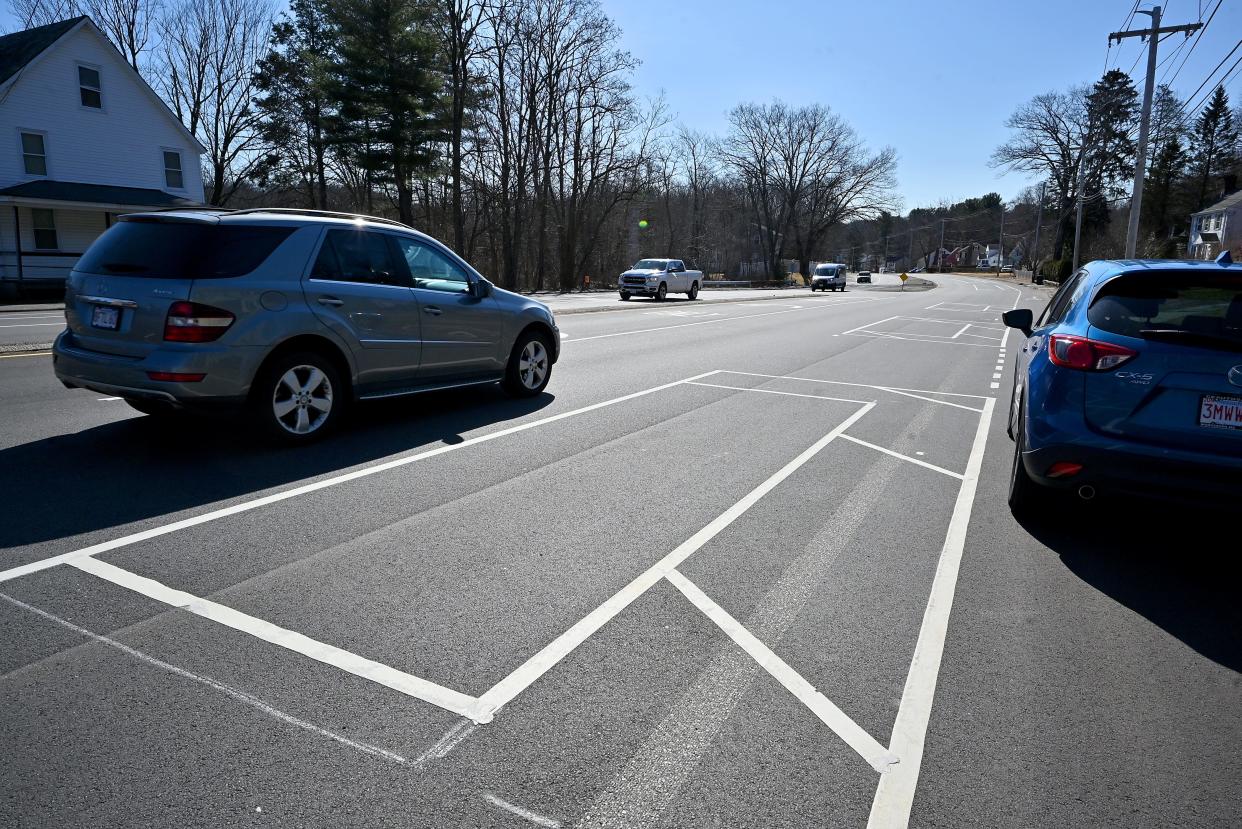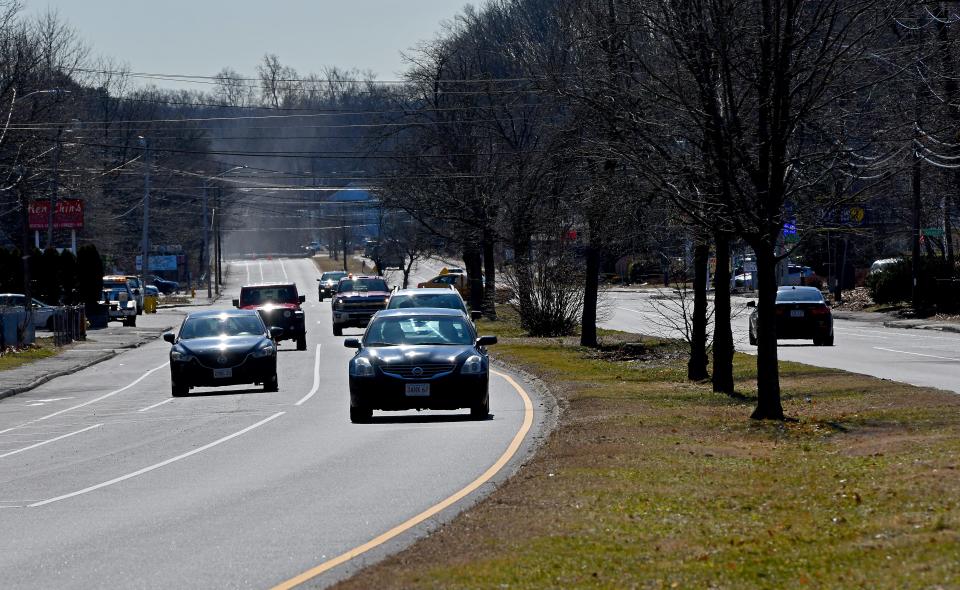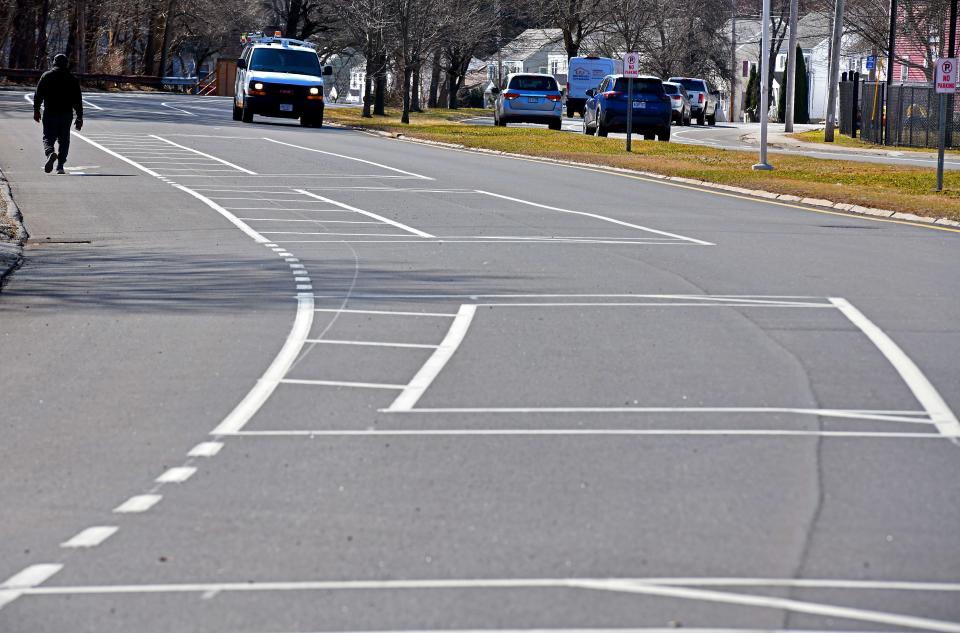Worcester councilors: Reworked Mill Street appears to be a safety hazard

WORCESTER — Following reports of a resident dying in a collision on Mill Street, City Council on Tuesday requested the city pause replicating the street's controversial redesign with any other street projects.
Late last year, Mill Street was redesigned to create parking-protected bike lanes on both sides of the street.
City officials said none of the other planned street reconfigurations feature similar layouts.
The design reconfigured one of the two driving lanes on each side of the 1.8-mile, four-lane portion of the street into bike lanes.
The redesign was hotly contested on social media and in public forums with supporters saying it made the street safer for bicyclists and calmed speeds on a street known for speeding, and critics saying the design was confusing for drivers and increased risk of collisions with vehicles parked on the street.
Councilor-at-Large Morris Bergman submitted an order requesting City Manager Eric D. Batista pause elimination of travel lanes on public streets with the creation of on-street parking spaces.

Councilor-at-Large Donna Colorio requested a report from the Department of Transportation and Mobility on the number of crashes that have occurred on Mill Street since the reconfiguration and an analysis of the reconfiguration's impact on street safety.
Death of resident
The orders come after reports that a 90-year-old man, identified by Mayor Joseph M. Petty and Colorio as Daniel Abraham, died following a crash on Mill Street where a moving vehicle collided with parked cars.
According to his obituary from Mercadante Funeral Home, Abraham died March 5.
Prior to the reconfiguration, Mill Street was the site of several crashes.

George Wood, a Paxton resident and chiropractor practicing in Worcester, was Abraham's co-parishioner at St. George Orthodox Cathedral. During the public comment period at Tuesday's City Council meeting, he said the street is hard to navigate.
"It makes, to me, logistically not much sense as to how it was designed," Wood said, adding that he was treating a patient who had suffered an injury related to a Mill Street crash.
Some of Abraham's other co-parishioners were in attendance at the meeting Tuesday.
Several commenters spoke in favor of the reconfiguration.
"The city has really done their due diligence on this particular issue to show the previous design was unsafe," Worcester resident Eric Stratton said.
Department of Transportation and Mobility Commissioner Steve Rolle said the street has seen a roughly similar number of crashes, along with a reduction in travel speeds. The city plans to make improvements to address concerns including making bicycle crossings green, using flex posts to draw attention to parking spaces and installing a right-turn pocket approaching June Street.
'Complete Streets' plan
The city recently received $2 million to make improvements to Mill Street in line with a "complete streets" vision.
The funding was earmarked in the fiscal 2024 federal budget .
"Complete streets" refers to a street design policy championed by transportation advocates nationwide that attempts to enhance safe travel for residents whether they are in a vehicle, walking or on a bicycle.
When talking about her request, which passed unanimously, Colorio said a resident had just texted her about a new crash.
"Many residents in this area expressed that this reconfiguration doesn't make sense," Colorio said. "Some people say it's a learning process. Some say that a parked car in the middle of the street doesn't make sense. How does a newcomer on the street know what to do?"
Bergman said he did not know whether the reconfiguration was a good or bad idea, but he brought up Abraham's death.
"I don't know whether the design is good or bad, but what I do know is that there is a lot of people, myself included, that find it an odd way of having cars parked in what seems like the roadway," Bergman said.
While Bergman said no one can be sure the configuration caused Abraham's death, he said funeral attendees felt the reconfiguration was at fault.
"Our obligation ought to be like physicians: At first do no harm," Bergman said. "It seems to me like we're raising the risk of doing harm unless we take a pause and give it a full year."
Bergman added the bike lanes do not extend to the ends of the street and portions of the lane transition to different parts of the street.
Councilor-at-Large Khyrstian King said it was important that City Council have the ability to ask questions on issues of safety.
King said he would support moving parking to the curb while the city works on improvements to the street.
Haxhiaj and Nguyen vote no
District 5 City Councilor Etel Haxhiaj, whose representation includes Mill Street, said she was concerned about misinformation and speculation about the number and causes of recent crashes.
"I don't find it helpful that we're sitting here reading texts from residents saying that there was a crash on Mill Street without understanding the circumstances," Haxhiaj said. "All that kind of fear does is instill more insecurity and more concerns and more questions among residents."
Haxhiaj said experts and data show street configurations similar to Mill Street's have proven effective in other communities. She said the city does not have enough information on the reconfiguration yet to dictate street policy.
City Council voted 9-2 in favor of Bergman's request. Bergman was joined by Petty, Colorio, Councilor-at-Large Kathleen Toomey, King, District 1 City Councilor Jennifer Pacillo, District 2 City Councilor Candy Mero-Carlson, District 3 City Councilor Russell and District 4 City Councilor Luis Ojeda.
Haxhiaj and Councilor-at-Large Thu Nguyen voted no.
The city's website includes a list of street projects for Stafford Street; Chandler Street from Main Street to Park Avenue; Chandler and May streets; and Endicott and Bigelow streets.
Batista said no street project scheduled for the rest of the year is planned to replicate Mill Street, nor to feature a lane reduction for the purpose of creating a parking-protected bike lane.
After the meeting, Wood said the council's vote was a step in the right direction and that he hoped the city would give a future presentation on where else cars on Mill Street could park.
This article originally appeared on Telegram & Gazette: Worcester councilors say reworked Mill St. appears to be safety hazard

